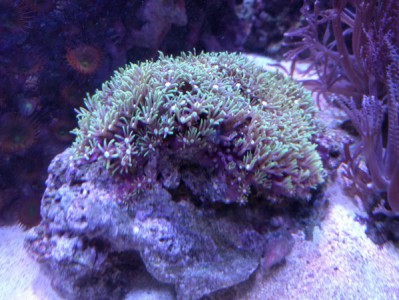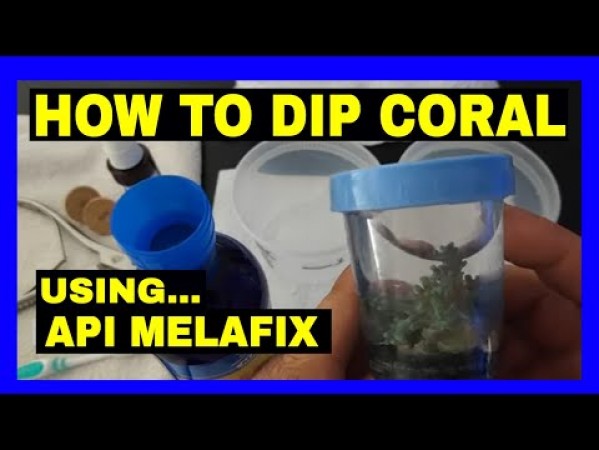- Name:
Starburst Polyp
(View AKA's) - Family: Briareidae
- Species: Briareidae Soft Coral
- Scientific Name: Briareum sp


General info about Starburst Polyp
In general, soft corals coming from the genus Clavularia has many individual polyps that is binded altogether in one colony. They are a small-sized colony averaging only 3 inches (7.6 centimeters) in height. They are ideal for newbie aquarist since they have no calcified skeleton making them highly tolerant to nutrient fluctuation, especially when it comes to calcium, magnesium and alkalinity of the water.
As for the Starburst Polyp, they are predominantly colored brown yellow with white mouth. This are the water parameters for cultivating Starburst Polyp:
- Calcium: 420 - 430 ppm
- Alkalinity: 3.21 - 3.57 MEQ/L (9 - 10 dKH)
- Phosphates: 0
- Magnesium: 1280 - 1350
- Strontium: 8 -10 mg/L
- Temperature: 77° - 81° F (25° - 27° C)
- Salinity / Specific Gravity: 1.023 - 1.025
- pH: 8.0 - 8.4
Starburst Polyp Diet & Nutrition
While the Starburst Polyp gets it primary nourishment from a symbiotic zooxanthellae living within its tissues, the require supplemental feeding like mysis or brine shrimp.
Fragging / Propagating Starburst Polyp
The Starburst Polyp should be set either at the bottom or at the middle part of the tank.
Flow / Lighting Requirements for Starburst Polyp
The Starburst Polyp requires moderate lighting and moderate waterflow.
Starburst Polyp Origin
The Starburst Polyp are found in the waters of the Indo-Pacific Ocean.
Caution Should be Taken with Starburst Polyp
While the Starburst Polyp has a peaceful behavior, you have to give them enough space since they release a slime coat that is harmful to other corals and irritating to a human skin. You should wear gloves in handling them. They don't need too much light, otherwise they will die and will be eaten by both fish and invertebrates.
How to Acclimate Starburst Polyp
Starburst Polyp are purely marine species. Therefore, salinity must be entirely maintained from 1.023 to 1.025 specific gravity.
Stinging Tentacles on Starburst Polyp
Starburst Polyp occassionaly releases a slime coat from their body that is harmful when lodged to other coral colonies. This slime coat can cause irritation to the human skin, so you should wear gloves in handling them.
Original Detail
| Name | Species | Family | Scientific Name | More Detail | Added by |
|---|---|---|---|---|---|
| Starburst Polyp | Briareidae Soft Coral | Briareidae | Briareum sp | In general, soft corals coming from the genus Clavularia has many individual polyps that is binded altogether in one colony. They are a small-sized colony averaging only 3 inches (7.6 centimeters) in height. They are ideal for newbie aquarist since they have no calcified skeleton making them highly tolerant to nutrient fluctuation, especially when it comes to calcium, magnesium and alkalinity of the water. As for the Starburst Polyp, they are predominantly colored brown yellow with white mouth. This are the water parameters for cultivating Starburst Polyp:
|
PalaciosAn |
Changed by users
| Submitted Date | Submitted By | Status | Action |
|---|



